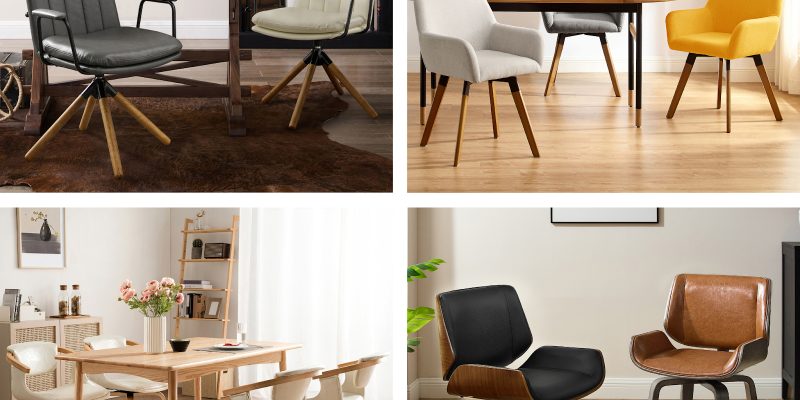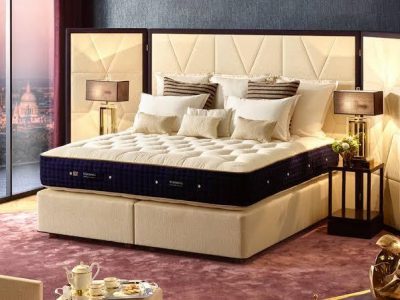The world of interior design is a kaleidoscope of trends, styles, and eras, each with its unique charm. Among the myriad options available, mid-century modern design stands out as a timeless and enduring style that continues to captivate homeowners and designers alike. When it comes to dining spaces, one element that can effortlessly elevate the entire room is the choice of seating. In this article, we delve into the timeless appeal of mid-century dining chairs, exploring their design principles, versatility, and why they remain an enduring choice for those seeking a perfect blend of style and functionality.
The Essence of Mid-Century Modern Design
Before we embark on our exploration of mid century dining chairs, it’s crucial to understand the essence of mid-century modern design. Originating in the mid-20th century, this design movement emerged as a response to the ornate and elaborate styles that dominated the early 1900s. Mid-century modern design embraced simplicity, functionality, and a connection to nature. Clean lines, organic shapes, and a focus on practicality defined this movement, creating a design philosophy that has stood the test of time.
Key Characteristics of Mid-Century Modern Design:
Clean Lines and Sleek Forms:
Mid-century design is synonymous with clean, uncluttered lines. Dining chairs from this era often feature straight, simple lines that contribute to a sense of openness and simplicity in a space.
Natural Materials:
Mid-century modern designers had a penchant for using natural materials such as wood, leather, and metal. This emphasis on natural elements adds warmth and authenticity to the furniture pieces.
Functionality:
Form follows function in mid-century modern design. Dining chairs are designed with comfort and practicality in mind, making them not only aesthetically pleasing but also highly functional.
Iconic Shapes:
Many mid-century dining chairs boast iconic shapes that have become synonymous with the era. From the Eames Molded Plywood Chair to the Wegner Wishbone Chair, these pieces have become design classics.
Versatility in Design
One of the remarkable aspects of mid-century dining chairs is their versatility in design. Whether your dining room exudes a vintage charm, a contemporary vibe, or anything in between, mid-century chairs seamlessly integrate into diverse settings. This adaptability is a testament to the enduring appeal of their design, making them a go-to choice for homeowners with varying tastes.
Versatility Highlights:
Mix and Match Possibilities:
Mid-century dining chairs from Art Leon come in a variety of styles, allowing homeowners to mix and match different designs. This flexibility enables the creation of a curated and eclectic dining space that reflects personal style.
Integration with Modern Decor:
The clean lines and minimalist aesthetic of mid-century dining chairs make them an ideal choice for modern interiors. They effortlessly blend with contemporary decor, adding a touch of retro chic to the overall ambiance.
Complementing Various Table Styles:
Whether your dining table is a sleek glass-top or a robust wooden piece, mid-century chairs complement a wide range of table styles. This adaptability ensures that the chairs can be seamlessly integrated into existing dining room setups.
Iconic Mid-Century Dining Chairs
To truly appreciate the timeless appeal of mid-century dining chairs, it’s worth exploring some of the iconic pieces that have become synonymous with this design movement. These chairs not only encapsulate the spirit of mid-century modern design but also serve as timeless classics that continue to inspire contemporary furniture designers.
1. Eames Molded Plywood Chair:
Design Highlights:
- Iconic molded plywood seat and back.
- Eiffel Tower-style legs in metal.
- Organic, flowing form for ergonomic comfort.
Timeless Appeal:
The Eames Molded Plywood Chair, designed by Charles and Ray Eames in the 1940s, showcases the innovative use of materials and a form-follows-function philosophy. Its curvilinear shape and use of molded plywood have made it a design classic that remains relevant in today’s interiors.
2. Wegner Wishbone Chair:
Design Highlights:
- Y-shaped backrest resembling a wishbone.
- Handwoven paper cord seat.
- Graceful, sculptural silhouette.
Timeless Appeal:
Hans J. Wegner’s Wishbone Chair, designed in 1949, is a testament to the beauty of craftsmanship and timeless design. Its sculptural elegance and the ergonomic shape of the wishbone back make it a sought-after choice that effortlessly blends into various interior styles.
3. Saarinen Tulip Armchair:
Design Highlights:
- Molded fiberglass or plastic shell.
- Single, pedestal base resembling a tulip.
- Organic and futuristic design.
Timeless Appeal:
Designed by Eero Saarinen in the 1950s, the Tulip Armchair is an embodiment of mid-century futurism. Its single pedestal base eliminates the need for traditional chair legs, creating a sense of fluidity and modernity. The Tulip Armchair adds a touch of avant-garde charm to any dining space.
Tips for Incorporating Mid-Century Dining Chairs into Your Space
Now that we’ve explored the timeless appeal and versatility of mid-century dining chairs, let’s delve into some practical tips for incorporating these design gems into your dining space. Whether you’re starting from scratch or looking to refresh your current setup, these tips will guide you in creating a stylish and inviting dining area.
1. Embrace Mixing and Matching:
- Consider combining different mid-century chair designs for an eclectic look.
- Ensure a cohesive element, such as color or material, ties the chairs together.
- Mixing and matching add visual interest and a personalized touch to the dining area.
2. Choose a Statement Piece:
- Opt for a standout mid-century chair as a focal point.
- This could be an iconic design or a chair with unique features.
- Let the statement piece set the tone for the entire dining space.
3. Play with Colors and Materials:
- Experiment with vibrant colors or stick to classic mid-century neutrals.
- Choose chairs with wooden or metal legs based on the overall aesthetic.
- The right combination of colors and materials can enhance the visual appeal of the dining area.
4. Consider Upholstered Options:
- Upholstered mid-century chairs add comfort and a touch of luxury.
- Explore fabric options that complement your existing decor.
- Upholstery provides an opportunity to introduce texture and softness to the dining space.
5. Pay Attention to Scale:
- Ensure the size of the chairs complements the size of the dining table.
- Avoid overcrowding the space or selecting chairs that are too small.
- Proportional balance contributes to a visually pleasing and comfortable dining area.
Conclusion
In conclusion, mid-century dining chairs are more than just pieces of furniture; they are design classics that transcend time and trends. The clean lines, organic forms, and versatility of mid-century modern design make these chairs an ideal choice for those seeking to elevate their dining spaces. Whether you opt for iconic pieces like the Eames Molded Plywood Chair or the Wegner Wishbone Chair, or you decide to mix and match different designs, mid-century dining chairs effortlessly blend style with functionality.




















